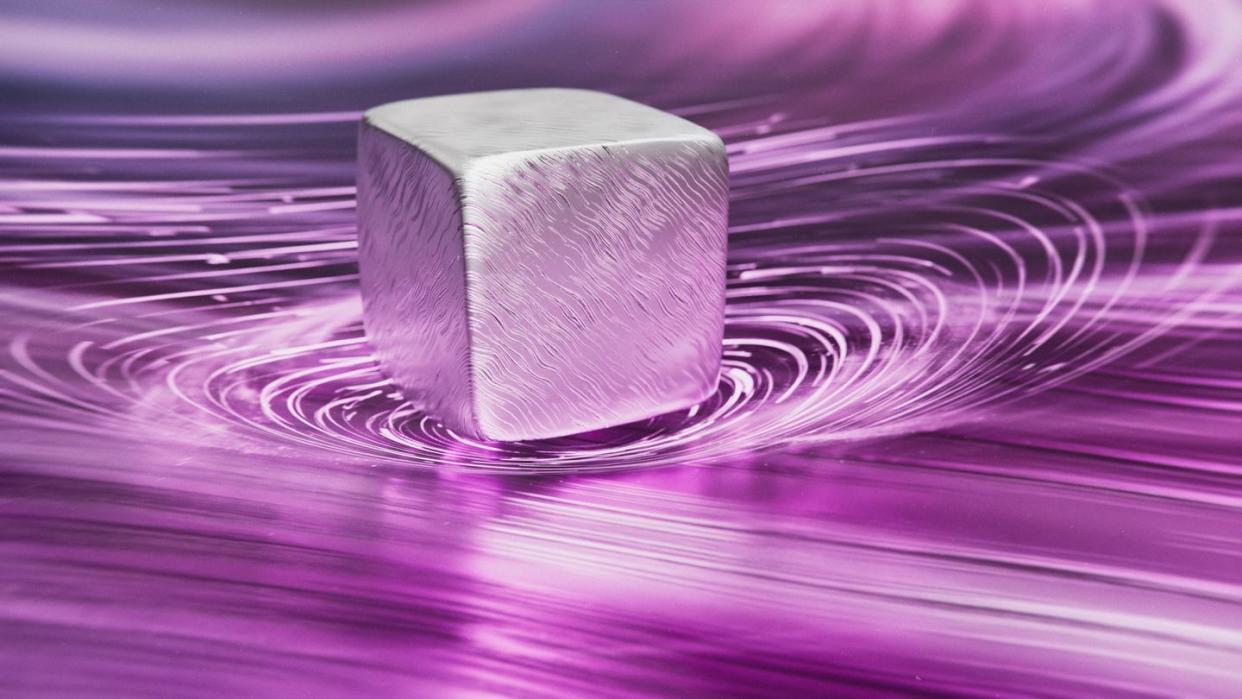A Superconductor Found in Nature Has Rocked the Scientific World

"Hearst Magazines and Yahoo may earn commission or revenue on some items through these links."
Scientists have identified the first unconventional superconductor that you can find in nature.
Conventional superconductors follow a specific, well known paradigm called BCS.
Miassite does occur naturally, but this test was on a pure, lab-made sample.
In new research, scientists explain how one mineral found in nature is more than just a typical superconductor. Miassite is a gray, metallic mineral made of rhodium and sulfur and, as Science Alert explains, was identified as a regular superconductor in 2010. But now, miassite has passed a variety of odd-seeming tests that show it’s also an “unconventional” superconductor—joining a small group that, so far, has only included laboratory-conceived materials. That research appears now in the journal Communications Materials, and to understand what it all means, we first need to understand the conventional superconductors.
Inside a regular material that conducts electricity, moving electrons pass through where they have room to do so. But those paths are not huge or perfect, so the electrons experience resistance. Conductors are often organized by how much resistance they produce—the less resistance is better. Some products, like heating pads, intentionally use resistance because the electrons deposit more of their energy into the structure when they get “stuck.”
Superconductivity, on the other hand, is a state where the electrical resistance inside a solid material drops to zero. It was first discovered in 1911 by Dutch scientist Heike Kamerlingh Onnes and his students, and scientists have theorized about different types, or the potential for different types, ever since.
A typical superconducting material only achieves superconductivity at extremely low temperatures and, usually, under a high amount of pressure. That’s because the major theory that explains superconductors, called Bardeen-Cooper-Schrieffer Theory (BCS), relies on special electron pairs held at low temperature in the state of matter called Bose-Einstein Condensate (BEC). A high-temperature BEC is as highly sought after as a high-temperature superconductor, since cooling anything to near absolute zero is expensive in equipment and energy.
Unconventional superconductors are any superconducting materials that don’t conform to what we know about BCS theory. But testing materials for unconventional superconductors involved making them in a lab and then putting them in near absolute zero temperatures. This was just not possible for a long time.
In 1978, German physicist Frank Steglich discovered the first unconventional superconductor in his laboratory, made from cerium, copper, and silicon. This “heavy fermion” superconductor doesn’t conform to BCS theory, so its superconductivity is coming from something else. Other unconventional superconductor types include cuprates (specific materials containing copper) and ferropnictides (iron with nitrogen, bismuth, or other Group 15 elements).
But, as the new paper explains, all of these materials “are products of synthetic solid-state chemistry and are not found in nature. Our work establishes Rh17S15 as a unique member of the unconventional superconductors, being the only example that occurs as a natural mineral.” Rhodium is “a fragile superconductor” on its own and in a number of lab-made compounds. Sulfur, too, is found in superconductive hydrogen sulfide—a gas that would never be found in solid mineral form in nature, unless that nature is deep inside of Uranus.
Lab-made miassite passed all the superconductor tests, David Nield of Science Alert explains. “Three different tests were used to establish the unconventional superconductivity, including the London penetration depth test, which measures the reaction of the material to a weak magnetic field. Another test involved creating defects in the material, which can affect the temperature at which it becomes a superconductor.” They also studied the nature and quantity of energy gaps in the material, because this special quality is what enables superconductivity. When the material is cooled enough, its energy range changes to one in which electrons can be freely exchanged with no resistance.
Miassite is the first naturally occurring mineral to show unconventional superconductivity, but the researchers explain that it joins an interesting natural superconductive category: covellite, certain meteorites, parkerite, palladseite, and miassite itself are all traditional superconductors made in the lab that have naturally occurring analogs. This paper explores miassite’s unconventional qualities in addition to its conventional ones—talk about an overachiever.
Although miassite is found in nature, it’s improbable that any natural sample would be superconductive. This brittle mineral is typically found as an inclusion, like the chocolate chips in another mineral’s cookie dough. Some deposits likely date back to just after the Solar System was born, 4.45 billion years ago, and they’ve been bopping around in the Earth mix ever since. Yes, the scientists tested their lab sample in a disordered state, but that process is very orderly compared to billions of years of real world experience.
But now, everyone who has a sample of miassite has a potential unconventional superconductor on their hands. To the laboratory!
You Might Also Like
